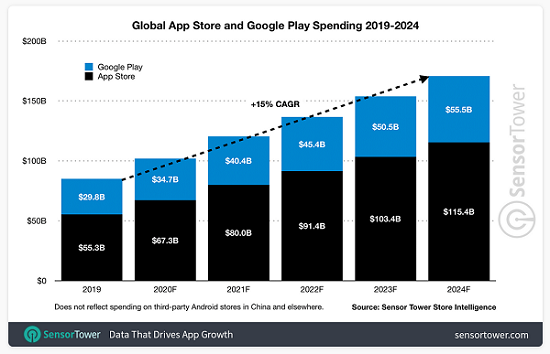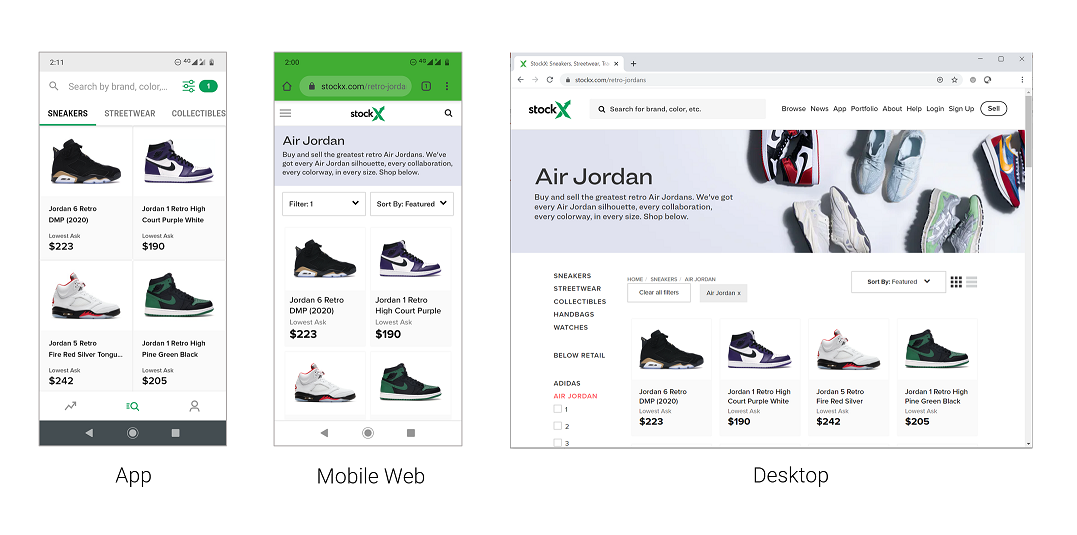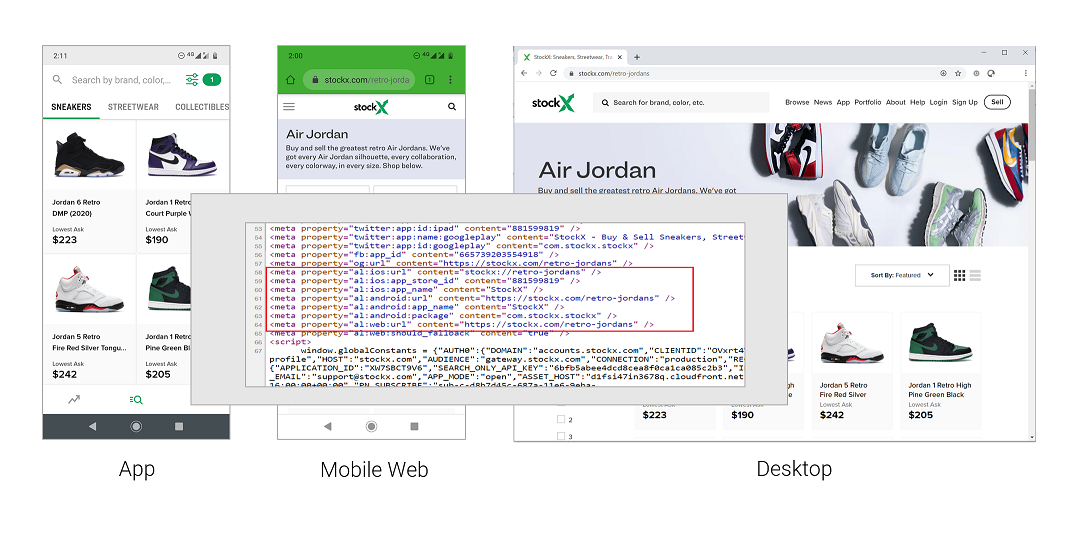If
Watch this brief video to learn how to generate an app links for use in any marketing channel.
A URL scheme for iOS or an Intent scheme for Android functions as an address in the app which allows it to be opened to the right screen at the right moment from another marketing channel. Whether your app is already established or still in development, your app deep linking possibilities are increasing exponentially and your marketing team or agency will continuously come across innovative campaign ideas that rely on URL schemes to increase app engagement and downloads. Following these three principles when developing a URL scheme taxonomy will ensure your app is ready to take advantage of every marketing opportunity that comes your way.
Pro Tip: Adding URL schemes to your app is something that your app development team needs to do for iOS and Android apps. Apple offers this guidance on adding URL schemes while Android offers this training. Your app development team mayneed that information when considering URL scheme requirements.
1. Empower your marketing team with a wide range URL schemes for app deep linking on iOS and Android
The first step in considering a URL scheme strategy is to try think of all the potential ways that you will link into your app. Get your marketing team and agency engaged in the conversation and brainstorm potential use cases for app deep linking strategies. You will not think of them all in advance, but the more URL schemes you create the more opportunities you will have to get consumers back into your app. For some apps, the screens that you will want to link into from other marketing channels are obvious. For example, ecommerce apps often have category and product level pages. If you have a web version of your app, consider having a URL scheme for every screen that has a corresponding web page. This will make it easy for your marketing team to create deep links that can route traffic into the app while falling back to the website or app store from the same campaign link.
Challenge 
2. Create an easy to understand URL scheme taxonomy
There is no reason to obscure your app URL schemes. Create a taxonomy that is easy to understand so your marketing teams and partner companies can interpret them with ease. StockX is a great example of a nicely designed mobile app with URL schemes available on iOS and Android. Like many ecommerce companies, each web page has a corresponding screen in the app for iOS and Android. The StockX app has clear URL schemes that are simple and easy to understand. For example, this is a product level page as seen in the app and on the website:

In this example, the following URL scheme taxonomy makes it easy to construct an iOS or Android app address by using the web URL:
- Web URL: stockx.com/retro-jordans
- iOS URL scheme: stockx://retro-jordans
- Android intent scheme: intent://stockx.com/retro-jordans/#Intent;package=com.stockx.stockx;scheme=https;end
Android Pro Tip: Android apps can support the same URL scheme format that iOS apps typically use. A best practice is to support both formats in your Android app because not all apps support linking into intent schemes. For example, if you are linking from Facebook app or messenger into your app, you need to use the URL scheme format typically used by iOS apps. To ensure maximum flexibilty, support both formats.
Note that for both iOS and Android, the same part of the web URL completes the scheme for each platform. This is a best practice that makes it easy to create deep links into your app for just about any web page. Your app deep linking platform will use these schemes or app addresses to open the app directly to that product screen from any channel.
It may seem complex but luckily marketers do not have to think about URL schemes once they are in place because your app deep linking platform will be the one using them when your marketing team creates deep links which are then placed in campaigns. The URL schemes in different apps can serve as great examples and a points of conversation for marketing and technical teams when discussing scheme configurations and any app updates needed in order to link into your app from different marketing channels including social advertising, messaging app and even QR codes.
3. Make your URL schemes transparent and easily found
Another best practice is to be transparent about your schemes and make them easy to find for all app destinations. One way to do that is through detailed documentation that you can provide to your deep linking platform, agencies and marketing partners. For web pages, another best practice is to declare your app schemes for iOS and Android in the meta data for each web page. Technical teams are accustomed to looking at meta data for app linking configurations and it will save your marketing team time in regard to conversations on the topic and get your campaign to market faster.
In staying with our StockX example, you can see that the schemes are clearly declared in the meta data for the page. This makes it easy for marketers to collaborate on app promotional efforts.

Pro Tip: Your app deep linking strategy can also aligned with app install banners for your website. Your app deep linking platform can give you the code for an app install banner that is visible on all browsers and devices while your marketing team can customize the size, colors and logo. This will help you increase organic installs and lower your cost per install.
As your marketing operation becomes more app-focused, URL schemes will play a more important role in your efforts to implement innovative campaigns that drive re-engagement and downloads. Make app URL schemes a permanent item on your agenda in meetings and conversations among marketing, customer service and technical teams. Can you readily link into any screen in your app? Can you create a marketing partnership with another company to increase engagement? Can you test the latest social ad type? Can you link into your app from QR codes and NFC devices? You will often find the answers to such questions in your URL scheme taxonomy for iOS and Android.
If you found this content helpful, check out some of our other popular how-to posts about linking to apps from different marketing channels:
- How to Generate a Single QR Code to Download an App from iOS App Store and Google Play
- Smarter App Install Banners: A Radically Easy Approach To Grow Organic App Installs
- How to Generate Links to Open Mobile Apps from Snapchat Ads and Stories
- How to Generate Links to Open Mobile Apps from YouTube Ads and Videos
- How To Generate Links to Open Mobile Apps from TikTok Ads and Profiles
- How to Generate Mobile App Links for Instagram Ads, Stories, and Profiles That Directly Open Your App
- How To Generate Links to Open Mobile Apps from Facebook Advertising
- How To Track App Downloads and Engagement with App Deep Links and Google Analytics UTM Tags
- How To Set Up Paid Search Campaigns with App Deep Linking
- iOS 14: Shift Focus to Organic App Install Strategies While You Have Time
- Smart App Banners for Mobile Websites
- How to Generate One Link to Both App Stores to Grow App Installs and Attribution Data
- How to Generate a Custom QR Code to Open an App
- How to Generate QR Codes to Open the MyChart App
